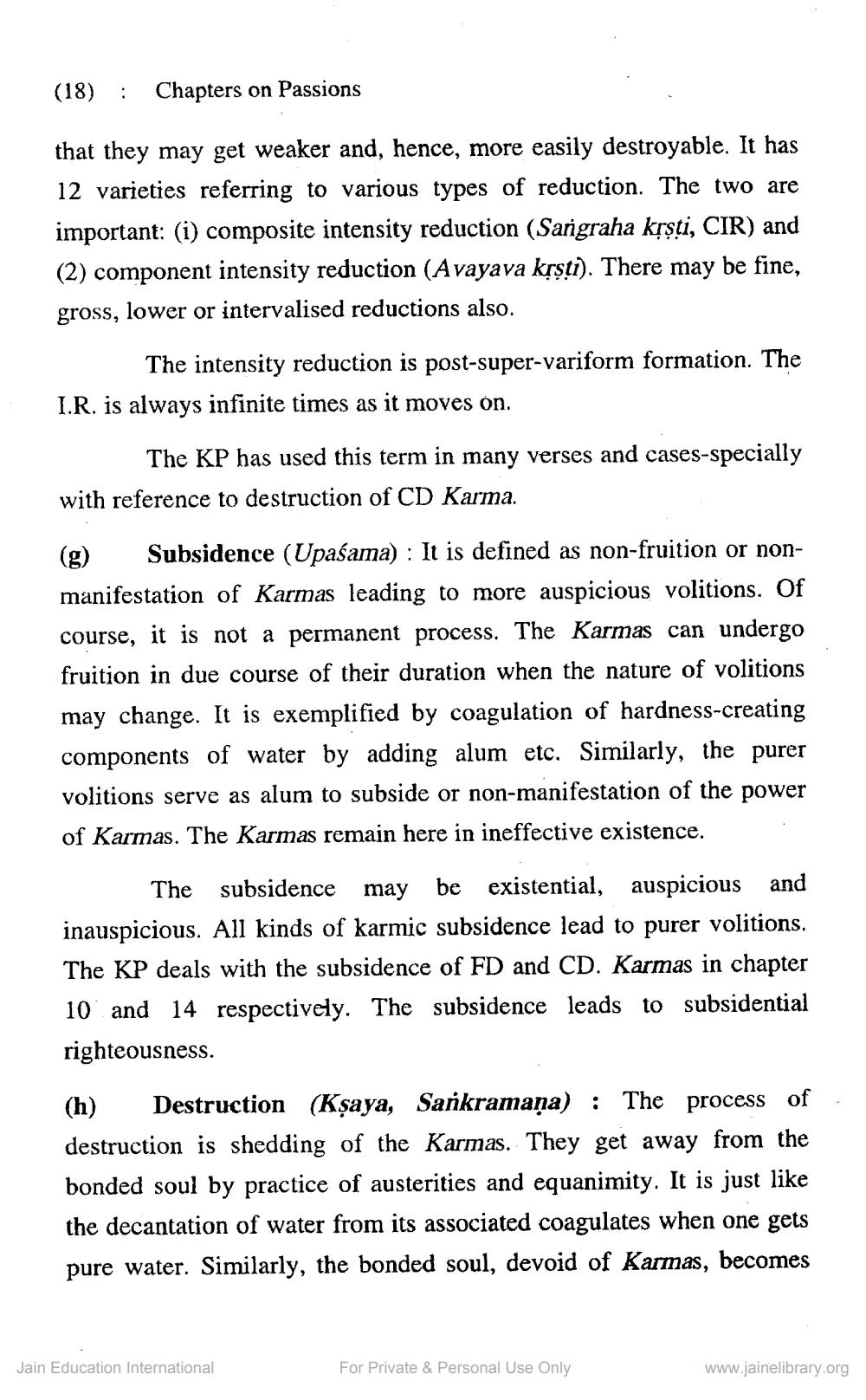________________
(18) : Chapters on Passions
that they may get weaker and, hence, more easily destroyable. It has 12 varieties referring to various types of reduction. The two are important: (i) composite intensity reduction (Sangraha kṛṣṭi, CIR) and (2) component intensity reduction (Avayava kṛşti). There may be fine, gross, lower or intervalised reductions also.
The intensity reduction is post-super-variform formation. The I.R. is always infinite times as it moves on.
The KP has used this term in many verses and cases-specially with reference to destruction of CD Karma.
(g)
Subsidence (Upaśama): It is defined as non-fruition or nonmanifestation of Karmas leading to more auspicious volitions. Of course, it is not a permanent process. The Karmas can undergo fruition in due course of their duration when the nature of volitions may change. It is exemplified by coagulation of hardness-creating components of water by adding alum etc. Similarly, the purer volitions serve as alum to subside or non-manifestation of the power of Karmas. The Karmas remain here in ineffective existence.
subsidence may be existential, auspicious and inauspicious. All kinds of karmic subsidence lead to purer volitions. The KP deals with the subsidence of FD and CD. Karmas in chapter 10 and 14 respectively. The subsidence leads to subsidential righteousness.
The
(h)
Destruction (Kṣaya, Sankramaṇa): The process of destruction is shedding of the Karmas. They get away from the bonded soul by practice of austerities and equanimity. It is just like the decantation of water from its associated coagulates when one gets pure water. Similarly, the bonded soul, devoid of Karmas, becomes
Jain Education International
For Private & Personal Use Only
www.jainelibrary.org




